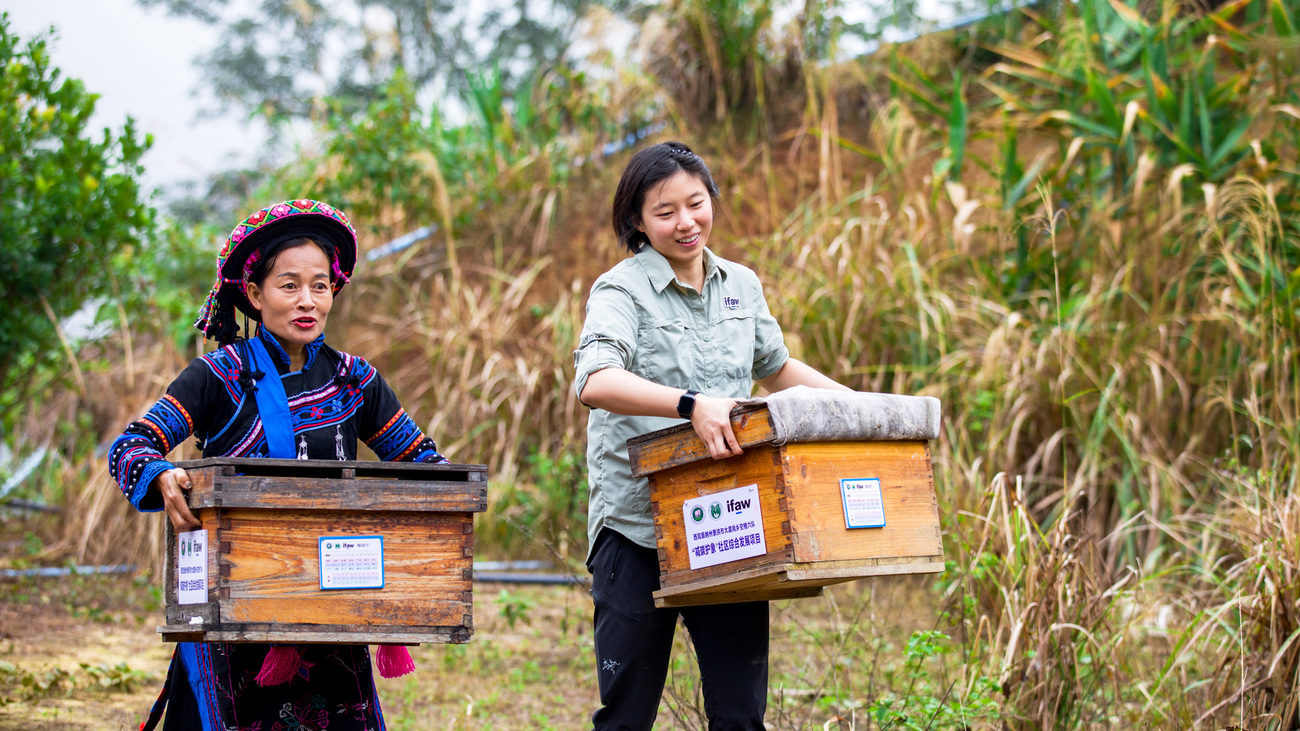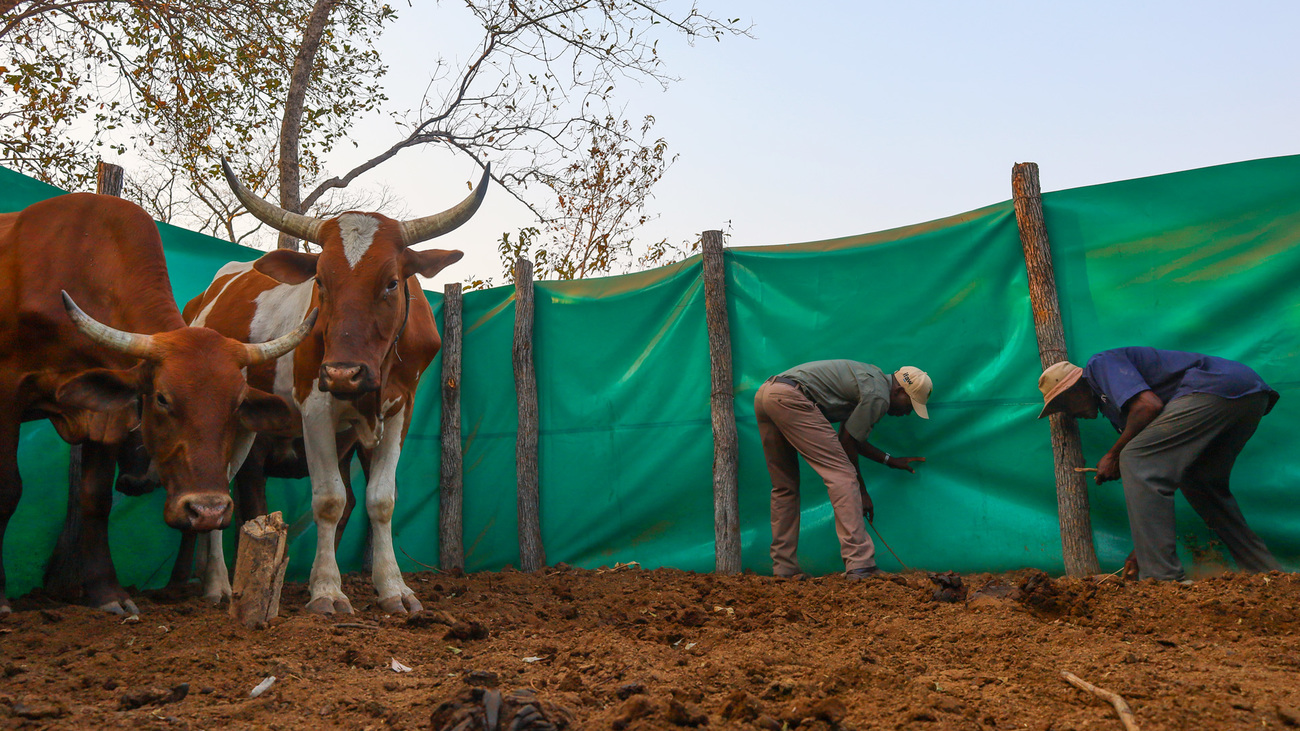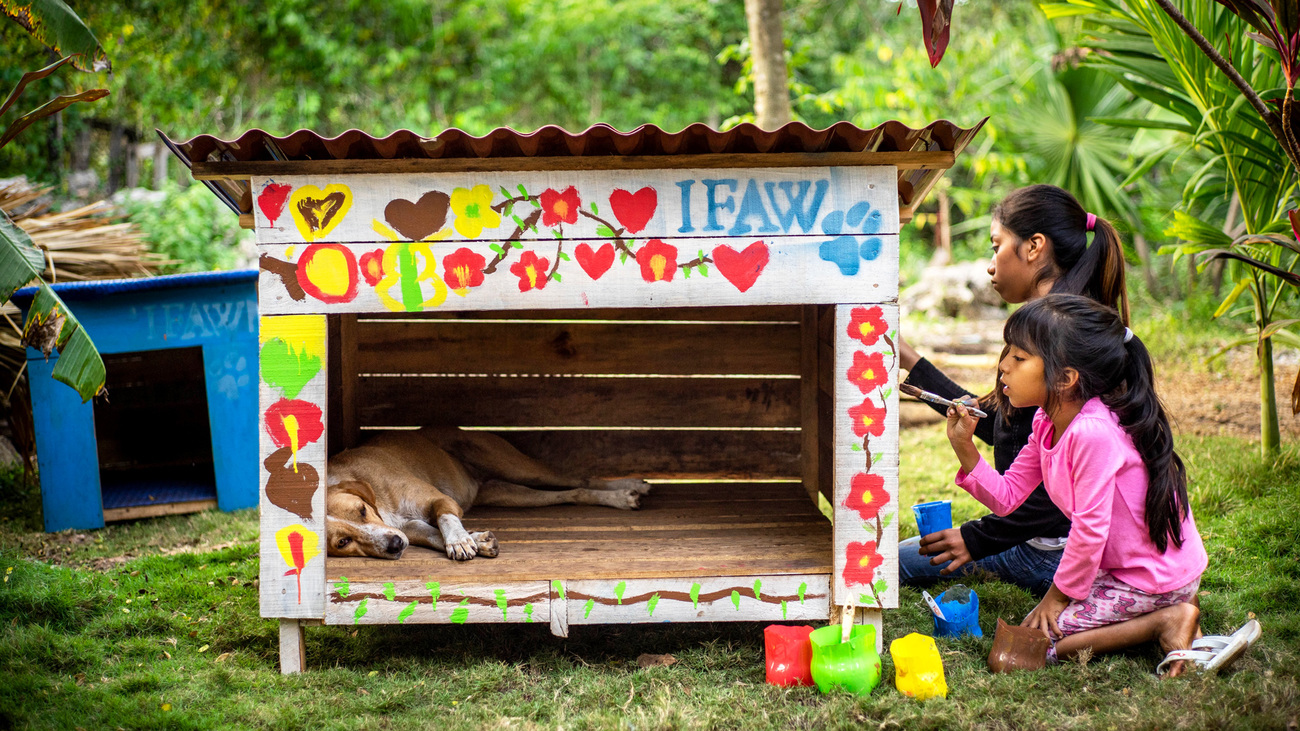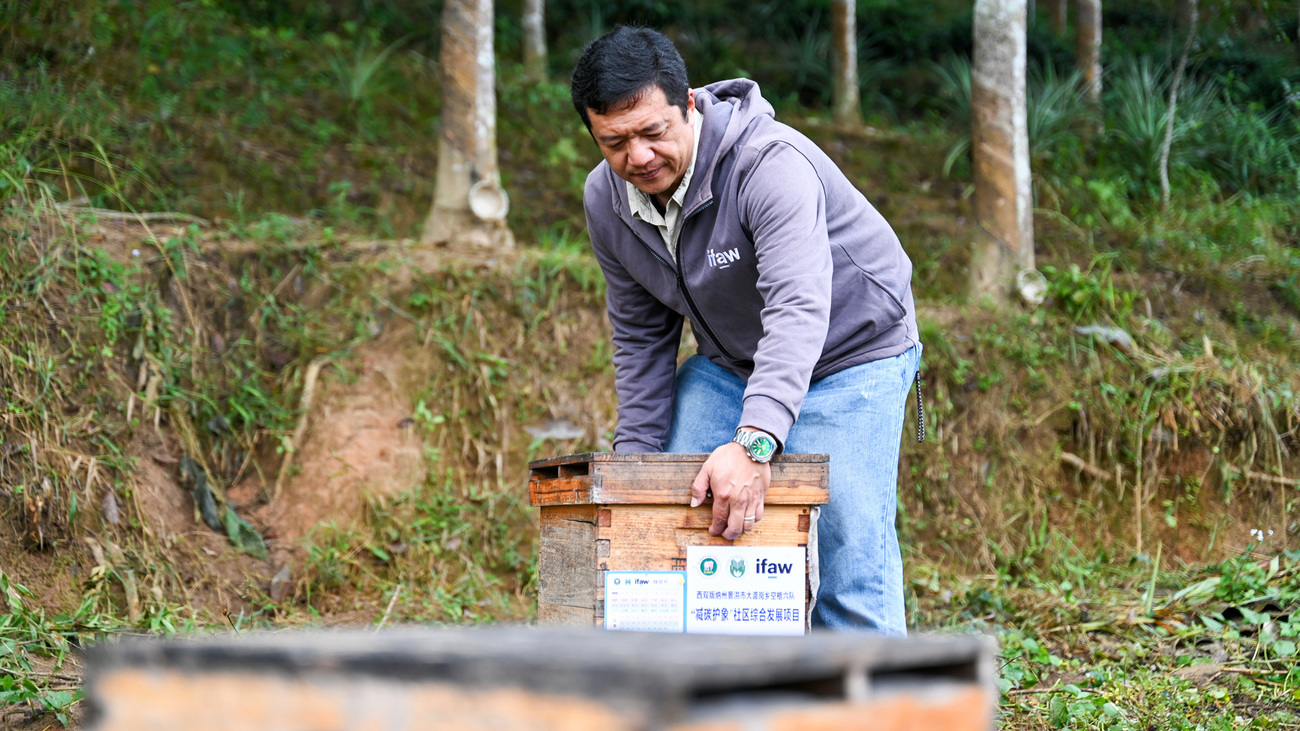What is coexistence? How animals and people can thrive together
What is coexistence? How animals and people can thrive together
We’re all well aware of the many consequences of human population growth and expansion into previously natural areas—the damage inflicted on houses built on floodplains or in fire-prone forests, a lack of green spaces in urban areas, smog-filled skies from industrialisation.

But what happens to wildlife when the landscapes they call home become stripped of their natural qualities and transformed into urban centres, commercial farms, or massive factories? When their food sources and habitats disappear? When new buildings, roads, and fences block their migratory routes?
Animals are increasingly being pushed into new areas where they compete for resources with other species, including humans. They may be considered a nuisance or even a threat to people who have never had to deal with them before. Some species are killed to the point that they become locally, or even globally, extinct.
These negative interactions are called human–wildlife conflict. It’s a major issue around the globe. But fortunately, there are many ways to avoid these conflicts and promote peaceful coexistence.
Coexistence means that people and wildlife live alongside each other while still having their needs met. We are interconnected with the species that share our planet, and our actions influence how peaceful or contentious our relationships with wildlife become.
At IFAW, we believe that learning how to coexist with wildlife is essential, not just for their survival but for our own.
Why do we need to coexist with wildlife?
Coexisting with wildlife benefits people and the planet in many ways.
Fighting climate change
Human-caused climate change is one of the biggest threats we face. With up to one million species of wildlife in danger from rising temperatures, it's natural that we often think of animals as victims. But they are also our allies in addressing it.
Nature can account for over a third of the carbon capture needed to mitigate the worst effects of climate change. Wild animals, such as whales and elephants, are crucial in that process.
Improving incomes and livelihoods
Many people depend on local wildlife for their incomes. In Kenya, for example, the marine ecosystem supports the livelihoods of 2.7 million people. Even indirectly, wildlife helps protect incomes and food supply. From bees pollinating crops to bats eating agricultural pests, wildlife is essential for helping farmers grow food.
Healthy wildlife populations can also boost local tourism, bringing more money and jobs along with it, as long as it’s sustainably managed.
In September 2024, the World Bank published a report, Banking on Protected Areas, with data on how nature-based tourism can provide economic benefits to communities. For example, according to the report, tourism generated jobs for 30% of working-age people around Zambia's South Luangwa National Park.
Social and emotional well-being
Several studies show that experiencing nature helps humans improve or maintain their physical and mental health. For example, a Stanford University study found that a 90-minute walk in a natural setting decreased negative thought patterns, while a 90-minute walk in an urban environment did not.
Cultural heritage
Many societies have strong links to the natural world that surrounds them. It is intertwined with their history, stories, traditions, and identity—so protecting wildlife is one important way to protect their cultural heritage.
Even wildlife far away from us captures our imagination and brings us joy. Imagine only knowing what an orangutan or shark used to look like because, like the dodo bird, they went extinct long before you were born. Future generations deserve to experience the same sense of wonder and excitement that magnificent creatures inspire in us.
Scientific advancement
Studying wildlife leads researchers to important discoveries that improve our lives. Did you know, for example, that fruit flies share 75% of the genes that cause diseases in humans? Their short life spans mean they’ve helped scientists better understand how diseases develop in people.
Wildlife inspires so many of our advancements that there’s a name for it: biomimicry, or biologically inspired engineering, where engineers observe nature to help them figure out solutions to human problems.
One amazing example is the way humpback whales inspired energy-efficient wind turbine blades. Humpback whales have small bumps called tubercles on the leading edge of their pectoral fins. These tubercles push water into fast-flowing streams between the bumps, reducing drag and helping the whales swim faster. When applied to wind turbines, tubercles help the blades turn faster so they can generate more energy. One study found that tubercles helped generate the same power from 10-mile per hour winds that would usually require 17-mile per hour winds.
Did you know that termite mounds help architects design buildings that are naturally ventilated and therefore more energy efficient? And the Namib Desert beetle helped engineers create a fabric that collects freshwater from fog, which helps people living in very arid areas to have drinking water.
Who knows what incredible discoveries we would miss if wildlife disappeared.
What can coexistence look like?
Conflicts between humans and wildlife can be incredibly difficult to solve. It can be much easier for people to find violent, destructive ways of dealing with wildlife they see as a threat or nuisance. In 2018 alone, a single US federal agency killed 1.5 million native wild animals in the name of 'controlling' them. These animals include beavers, coyotes, wolves, foxes, black bears, bobcats, doves, and many others killed with cruel traps or inhumane poisons—because they are seen as getting in the way of humans.
Fortunately, at IFAW, we thrive on finding innovative solutions to complex problems. Sometimes even simple changes can lead to big impact.
Lions in Zimbabwe
At least 500 lions live in Zimbabwe's Hwange National Park, and they increasingly come into conflict with humans over livestock, which lions see as a food source. It's estimated that lions killed more than 150 head of cattle between 2020 and 2022 in Hwange District, which has led farmers to kill lions in retaliation.
Shielding livestock from lions can help break this cycle, protecting lions from farmers and farmers from lions.
Conservationists recently discovered that lions are visual hunters, which means a simple opaque plastic sheet wrapped around an enclosure can significantly reduce the number of cattle that farmers lose. We’re working in partnership with ZimParks and the Wildlife Conservation Research Unit (WildCRU) to promote the use of these predator-proof enclosures. Another benefit is that they're easy to transport from one crop field to another as farmers move their herds.

We have seen a 50% to 90% reduction in livestock predation in parts of Hwange District where these enclosures have been deployed. This simple but innovative solution protects wildlife, reduces farmers’ risk of dangerous encounters, and helps preserve the food supply for communities that rely on local livestock.
Elephants in China
Asian elephants used to roam across tropical and subtropical Asia, but their population is estimated to have declined by more than half since the beginning of the 20th century. Their habitat is fragmented, and only around 300 of them remain in Yunnan province in southwest China, bordering with Laos, Myanmar and Vietnam.
As this area experiences population growth, rapid urbanisation, and commercial agriculture expansion, Asian elephants' habitats become smaller. Elephants destroy crops and properties and sometimes kill people, which creates a vicious cycle of human–elephant conflict.
Since 2000, IFAW’s Asian Elephant Protection project has been promoting human–elephant coexistence in four ways: monitoring elephants’ movements to warn communities when they are nearby; training local citizens and officials to help their communities understand elephant safety; helping farmers plant alternative crops that don't attract elephants; and creating a textbook for schools promoting elephant conservation.
Jaguars in Mexico
Although over 60,000 jaguars once lived from Arizona and Texas through Central and South America, their population has suffered terribly in the last hundred years. Their habitat is severely fragmented.
We often think of jaguars as jungle animals, but many live around growing cities, like Playa del Carmen, Mexico, where they prey on domestic, free-ranging dogs. Humans sometimes killed jaguars in retaliation, and jaguars contracted deadly diseases like canine distemper.
IFAW helped develop a simple solution. We provide materials to build little blue dog houses, so dogs have shelter and safety from jaguars, and jaguars are less likely to face retaliation from humans.

Coyotes in the US
Coyotes are adaptable animals that make their homes in rural, suburban, and urban areas. Although humans rarely see them, they sometimes prey on small domestic animals and livestock. The USDA Wildlife Services program kills more than 70,000 coyotes every year—an inhumane and unnecessary practice.
Non-lethal ways of coexisting with coyotes have proven to be effective and financially beneficial. For example, in Marin County, California, a programme helping local ranchers transition to non-lethal methods resulted in a 62% reduction in livestock losses and a cost savings of $50,000 in its first few years. Other simple methods include keeping small dogs on leashes and ensuring rubbish is safely stored and collected.
How does community engagement encourage coexistence?
We know that the communities living closest to wildlife are not only the most affected by human–wildlife conflict but also the best at finding solutions. We support them by sharing knowledge, tools and resources they need to prevent and mitigate conflicts.
Involving local communities in conservation ensures that solutions are sustainable and benefit both people and wildlife. Through social empowerment, which promotes autonomy, self-determination, and direct participatory democracy, we help communities adapt to the changing environment and improve their relationship with local wildlife, all while supporting their livelihoods.

We engage with communities around the world to find ways they can reduce the risk of conflicts.
In Kenya, we worked with Tsavo Trust to build a massive solar-powered fence that deters elephants from entering areas where communities grow their food. It reduced human–elephant conflicts by nearly 90% and protected the livelihoods of 7,000 marginalised small-scale farmers.
When people see a tangible benefit from conservation work, they are more likely to engage with it. That’s one reason we work with women in Kenya’s Maasai communities to earn a sustainable income and become wildlife rangers.
Sometimes people’s livelihoods make them more likely to experience conflict with wildlife. In China, we’re helping farmers plant crops that don’t attract elephants. From 2000 to 2005, we provided microcredit loans to local communities to help them shift to alternative crops that are still economically valuable. The programme covered 210 households from seven villages and achieved a 35% average increase in income with a 100% repayment rate. We also started started a pilot beekeeping project, which gives women an income that provides a safety net if they lose their other crops to elephants.
Reducing wildlife crime is another way to reduce deadly interactions between wildlife and humans. For the Chikolongo community near Malawi's Liwonde National Park, gathering water from the Shire River gave some poachers the opportunity to engage in illegal snaring and fishing. We worked with community leaders to instead pump water from the river to the village. We also established a community fish farm and developed an incentive system to encourage people to grow commercial crops. Since the project began, there have been no incidents of human–wildlife conflict.
As climate change and human population growth continue to bring us closer to wildlife, it’s more important than ever that we look for ways to coexist peacefully with our wild neighbours—after all, there is only one planet that all of us call home.
Related content
Every problem has a solution, every solution needs support.
The problems we face are urgent, complicated, and resistant to change. Real solutions demand creativity, hard work, and involvement from people like you.